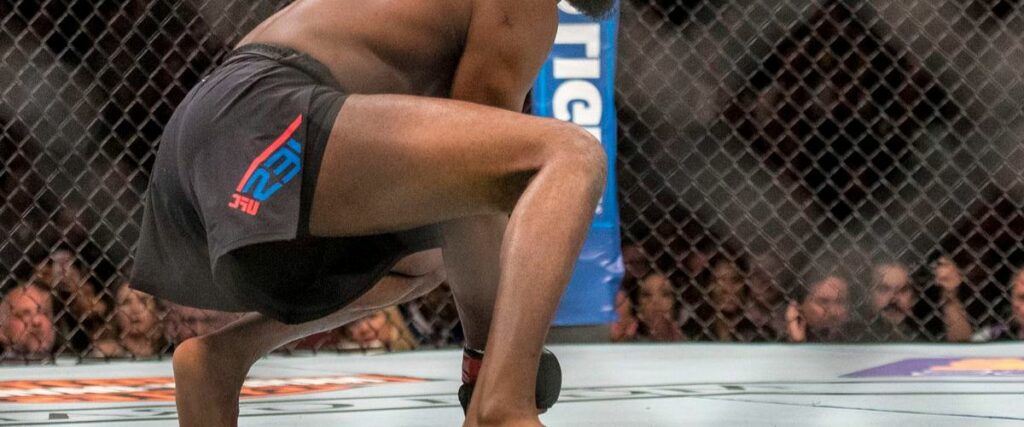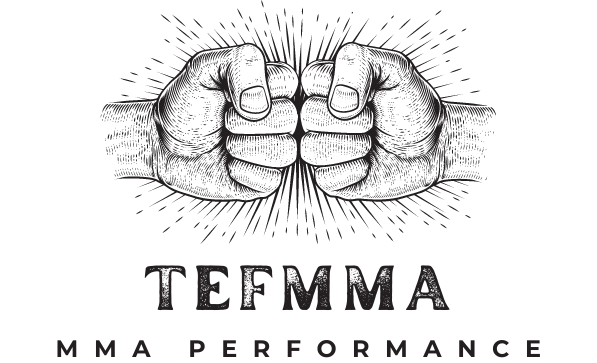As an MMA enthusiast, you might have noticed that fighters differ in their calf size, with some having massive calves. In contrast, others, like Jon Jones, have relatively small ones. However, the question remains, does calf size affect a fighter’s performance in the octagon?
But what is the truth about Jon Jones’ calf size and its impact on his performance? We’ll provide insights valuable to MMA enthusiasts and anyone interested in the science behind fighting.
Why Are Jon Jones’s Calves So Small?
Jon Jones is one of the greatest fighters in MMA history, with a record of 26 wins, 1 loss, and 1 no-contest. Despite his success in the octagon, Jones’ calves have often been a topic of discussion among fans and analysts, with many wondering why they are so small compared to other fighters.
One possible explanation for Jones’ small calves is that he hasn’t focused on developing them as much as other body parts. In MMA training, fighters often prioritize building strength and muscle in the most important areas for their fighting style.
For Jones, this may mean focusing more on upper and lower body strength and power to complement his unique fighting style, emphasizing range, speed, and agility over brute strength.
Another possible reason for Jones’ small calves is his genetics. Some people have a harder time building muscle in certain areas of their body, and calf muscles can be particularly challenging to develop.
Even with rigorous training and a healthy diet, some individuals may struggle to achieve the kind of hypertrophy (muscle growth) in their calf muscles that they desire.
While Jon Jones’ training regimen is not public knowledge, it is widely known that he incorporates powerlifting exercises into his training routine. However, it’s worth noting that calf muscles are not typically a targeted body part in powerlifting training.
Powerlifting exercises such as squats, deadlifts, and bench presses primarily target the legs, hips, back, chest, and arm muscles. While these exercises can certainly help build overall lower body strength, they may not necessarily lead to significant growth in the calf muscles.
Additionally, Jones has stated in interviews that he focuses on functional training, which emphasizes movements and exercises that directly translate to his performance in the octagon. For example, he may incorporate exercises such as plyometrics, jumps, and throws that help improve his footwork and speed.
Ultimately, while powerlifting exercises can undoubtedly benefit MMA strength and conditioning, they may not be the most effective way to target specific muscle groups such as the calves.
And for fighters like Jones, who prioritize agility, speed, and technique over raw strength, building massive calf muscles may be a low priority.
Despite his relatively small calf muscles, Jones has proven time and time again that he can compete with the best fighters in the world.
His unconventional fighting style, which includes a wide range of strikes, kicks, and grappling techniques, has allowed him to dominate his opponents and secure multiple championship titles.
So, while his small calves may be a curious feature, they certainly haven’t held him back from achieving greatness in MMA.
What Is The Benefit Of Small Calves In MMA?

While many fighters believe that having larger calves can provide a competitive advantage, there are several benefits to having smaller calf muscles in MMA.
For example:
- Improved footwork and agility: Smaller calves can make it easier for fighters to move around the octagon quickly and efficiently, evading their opponents’ attacks and setting up their own strikes. This is especially important for fighters who rely on their footwork and agility to gain an edge.
- Difficulty in executing takedowns: Smaller calf muscles can make it more difficult for opponents to grab hold of a fighter’s legs and execute takedowns. This can give fighters with smaller calves an advantage in grappling situations, making them more difficult to take down.
- Improved endurance: Smaller calf muscles may also improve a fighter’s endurance, requiring less energy to move and maintain throughout a fight. This can help fighters maintain a high pace and intensity throughout the fight, making them more likely to come out on top.
So, while many fighters believe that having larger calf muscles is necessary for success in MMA, there are several benefits to having smaller calves. As Jon Jones has shown throughout his career, success in the octagon is more than just brute strength – it’s about strategy, technique, and overall physical conditioning.
Do Fighters Need Big Calves?
While having larger calf muscles can be beneficial in certain situations, such as when executing powerful kicks, it’s not necessarily a requirement for success in MMA.
Ultimately, a fighter’s success in the octagon is determined by various factors, including their technique, strategy, and overall physical conditioning. So, while having big calves might give a fighter an edge in some situations, it’s certainly not a make-or-break factor when it comes to winning fights.
Summary
So, what can we learn from Jon Jones’ small calves? While it’s true that having larger calf muscles can be beneficial in certain situations, it’s not a requirement for success in MMA.
Fighters like Jones have proven that they can dominate their opponents even without massive calf muscles, thanks to their technique, agility, and overall physical conditioning. So, the next time you’re watching an MMA fight, don’t be too quick to judge a fighter based on the size of their calves alone!
